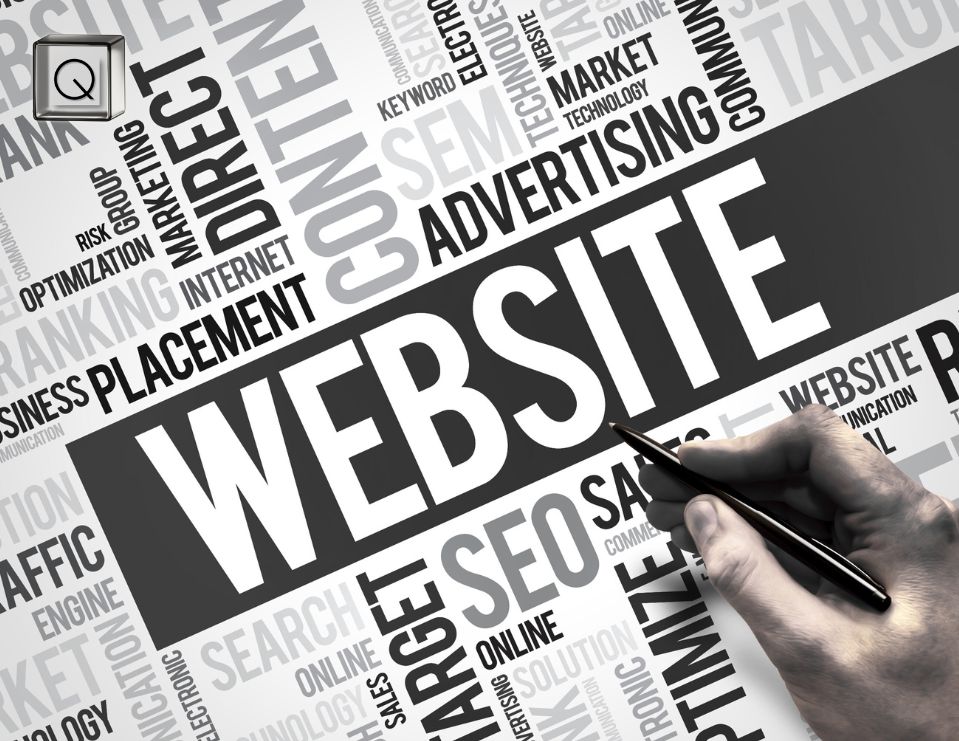As the digital landscape continues to evolve in 2025, building a high-performing, user-friendly, and scalable website requires choosing the right tools. QUBE understands that selecting the right website-building technology is critical to meeting your goals efficiently.
QUBE brings you a comparison of seven leading technologies in website building today: Next.js, WordPress, Laravel, Jamstack, Webflow, Shopify, and WooCommerce.
1. Next.js
Type: React-based Front-End Framework
Best For: Developers creating high-performance, SEO-optimized web apps
✅ Pros:
- Server-side rendering and static site generation
- Fast performance with optimized loading
- Strong TypeScript and API route support
- Backed by Vercel with strong community and updates
❌ Cons:
- Requires development knowledge (JavaScript/React)
- Not ideal for non-technical users
Use Case: Tech startups, SaaS platforms, dynamic web apps
2. WordPress
Type: CMS (Content Management System)
Best For: Bloggers, small businesses, and non-technical users
✅ Pros:
- Easy to use with thousands of themes and plugins
- Highly customizable via plugins and themes
- Large community and support base
❌ Cons:
- Performance can be an issue without optimization
- Security concerns if not regularly updated
- Plugin conflicts can cause issues
Use Case: Blogs, portfolios, small business websites
3. Laravel
Type: PHP Web Framework
Best For: Backend developers building custom applications
✅ Pros:
- Powerful MVC architecture and built-in features
- Great for custom backend logic and APIs
- Secure and scalable
❌ Cons:
- Requires PHP development knowledge
- No front-end out of the box (you need to pair it with Vue, React, etc.)
Use Case: Custom business applications, CRMs, portals
4. Jamstack
Type: Modern Web Architecture (JavaScript, APIs, Markup)
Best For: Developers prioritizing performance, scalability, and security
✅ Pros:
- Super-fast load times with static site generation
- Decoupled architecture for flexibility
- Works well with headless CMSs (e.g., Sanity, Contentful)
❌ Cons:
- Requires multiple tools/services (build tools, CMS, APIs)
- More complex setup than traditional CMSs
Use Case: Marketing sites, documentation, developer tools
5. Webflow
Type: No-Code Website Builder
Best For: Designers and marketers who want visual control
✅ Pros:
- Intuitive drag-and-drop interface
- Clean code export and CMS functionality
- Fast to launch and easy to update
❌ Cons:
- Limited backend customization
- Monthly fees can be high at scale
Use Case: Landing pages, agency sites, personal portfolios
6. Shopify
Type: Hosted E-Commerce Platform
Best For: Online retailers looking for an all-in-one solution
✅ Pros:
- All-in-one hosting, payment, and inventory system
- Scalable with apps and integrations
- Secure and reliable infrastructure
❌ Cons:
- Monthly subscription fees and transaction costs
- Limited customization outside the Shopify ecosystem
Use Case: E-commerce stores of all sizes
7. WooCommerce
Type: WordPress Plugin (E-Commerce)
Best For: WordPress users wanting to sell online
✅ Pros:
- Full integration with WordPress
- Highly customizable with themes and plugins
- No monthly fee (open-source)
❌ Cons:
- Performance issues with large catalogs
- Requires frequent updates and plugin maintenance
Use Case: Small to medium-sized online stores, WordPress users
Comparative Summary Table
| Technology | Ease of Use | Customization | Best For | Hosting Type | Tech Knowledge Needed |
|---|---|---|---|---|---|
| Next.js | ★★☆☆☆ | ★★★★★ | High-performance apps | Self/Vercel | High |
| WordPress | ★★★★☆ | ★★★★☆ | Content sites, blogs | Self-hosted | Low |
| Laravel | ★★☆☆☆ | ★★★★★ | Custom web apps | Self-hosted | High |
| Jamstack | ★★★☆☆ | ★★★★☆ | Developer-focused sites | CDN-based | Medium-High |
| Webflow | ★★★★★ | ★★★☆☆ | Designer-led websites | Hosted by Webflow | Low |
| Shopify | ★★★★★ | ★★★☆☆ | E-commerce businesses | Fully hosted | Low |
| WooCommerce | ★★★☆☆ | ★★★★☆ | WordPress-based stores | Self-hosted | Medium |
Final Thoughts
In 2025, there is no single “best” platform—only the best for your specific needs:
- Choose Next.js or Jamstack for performance and modern development.
- Pick WordPress or Webflow for ease of content management and design.
- Use Laravel for fully custom, backend-heavy solutions.
- Opt for Shopify or WooCommerce if your focus is e-commerce.
We, at QUBE help you in understanding the strengths and limitations of each technology is the first step toward building a successful, future-proof website. Consult QUBE today to help you better.

